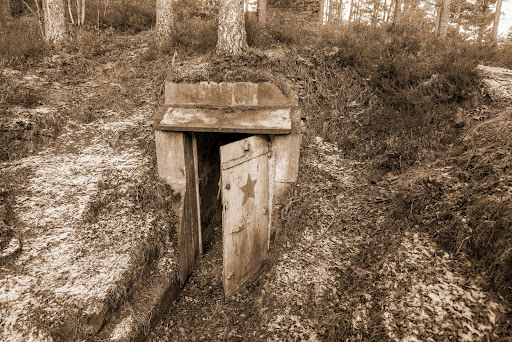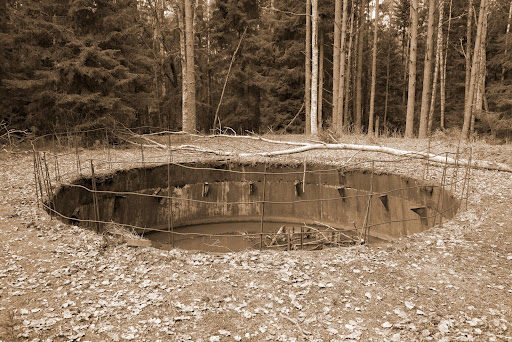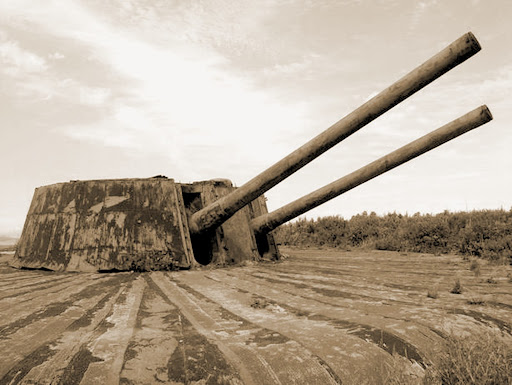The 180-mm coastal battery in Tahkuna (1941)

On September 28, 1939, the Republic of Estonia and the USSR signed the Mutual Assistance Treaty (the Bases Treaty). As a result, Estonia was obliged to let the Red Army units enter its territory. In Hiiumaa, almost 80 square kilometres was allocated for the Soviet military bases. By the summer of 1941, six coastal batteries were completed in Hiiumaa: a 180-mm one in Tahkuna, a 152-mm one in Hiiessaare, 130-mm ones in Tahkuna, Ristna, and Tohvri, and a 100-mm one in Palli. Three coastal batteries with 180-mm twin towers were built in Estonia: on the island Osmussaar, on the peninsula Sõrve säär, and in Tahkuna. The Tahkuna battery No. 316 consisted of two 180-mm twin-turrets, whereas the distance between the artillery blocks was 500 m. The two-storey underground artillery block included living quarters with all modern conveniences for 55 crew members. The total weight of the artillery cannon was 375 tonnes; its firing distance was 37 km; and the ammunition stockpile was 408 shells. After the artil-
lery blocks were blown up in October 1941, they became filled up with water and still are in this condition today. The upper parts of the artillery towers were cut into scrap metal in the late 1950s. In 2003, part of a gun barrel that had been stuck in the ground next to the block located nearer to Tahkuna was pulled out. It is exhibited in the Hiiumaa Military Museum. A two-storey underground control centre was built about 500 m north of the cannons. There is an armoured tower with a visor on the roof of the control centre. Between 1985 and 1993, a radiolocation company of the air defence forces was stationed in Lõimastu. The control point was set up in the shelter of the coastal battery; and a drill square was built next to it.
Gallery
It is a waypoint on the journey
You might also be interested in:













